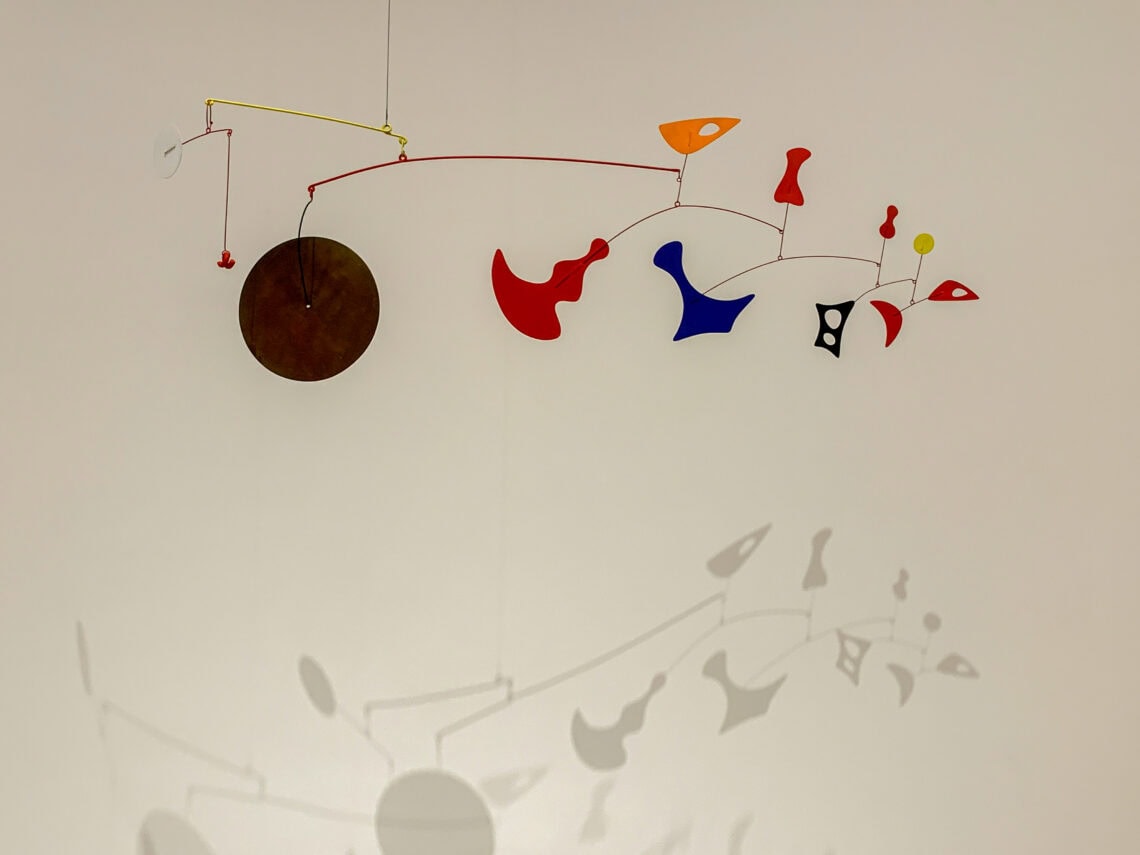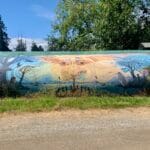When people hear the name Alexander Calder, they probably think of his mobiles. However, he also worked with other media.
Calder’s father and grandfather were both sculptors, mainly large pieces for public spaces. It’s said that his mobiles extended the idea of sculpture. He added movement and time to an art form that involved shape and color.
It’s pretty easy to understand movement as you watch one of his pieces drift on passing air currents, but time?
Yes, time. You can never view the same Calder mobile twice because the orientation of the parts is unlikely ever to be precisely the same. The role that time plays is demonstrated in the mobile at the top of this post. Every so often, but rarely, conditions result in the little hammer striking the gong.
Notice another thing: lighting is a key element. The interaction of a mobile and its shadow is an important part of the experience.
After beginning to work on mobiles, Calder grew interested in creating large, non-moving pieces. A clever friend proposed, “If your other works are mobiles, these must be stabiles.” The name stuck. The huge orange piece called The Eagle in Seattle’s Sculpture Garden is a stabile.
Before he invented mobiles, Calder worked in other media: painting, static sculpture, and drawing.




Then there are his static sculptures, although they are not like something Rodin would have done at all!



On to the mobiles. Notice the part shadow plays in the viewing experience.











Calder was a workhorse. He arose, worked in his studio, lunched, and worked some more. Not a hermit, he danced, drank, and enjoyed his artist friends in the evenings.






